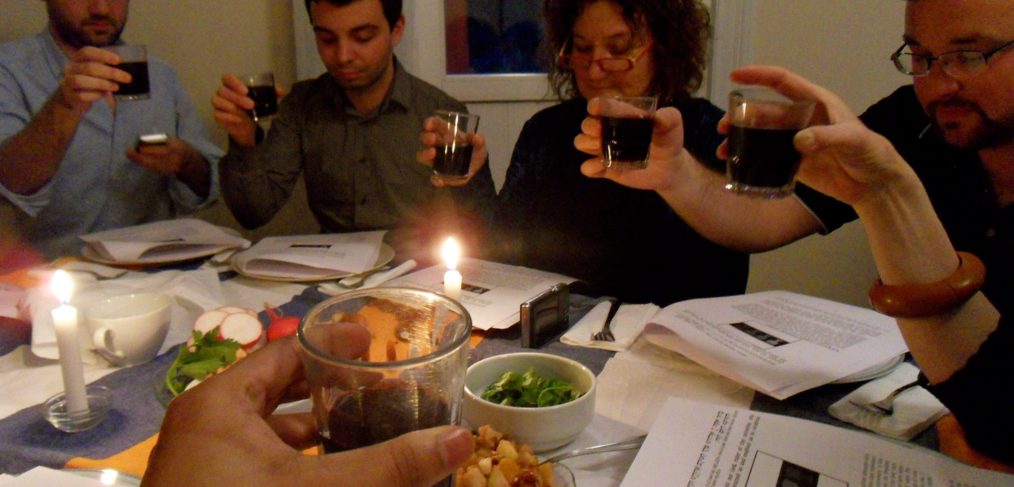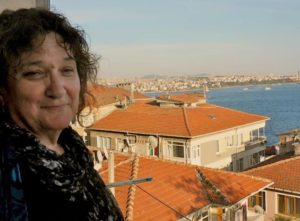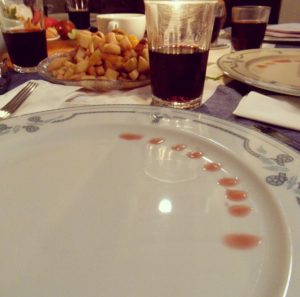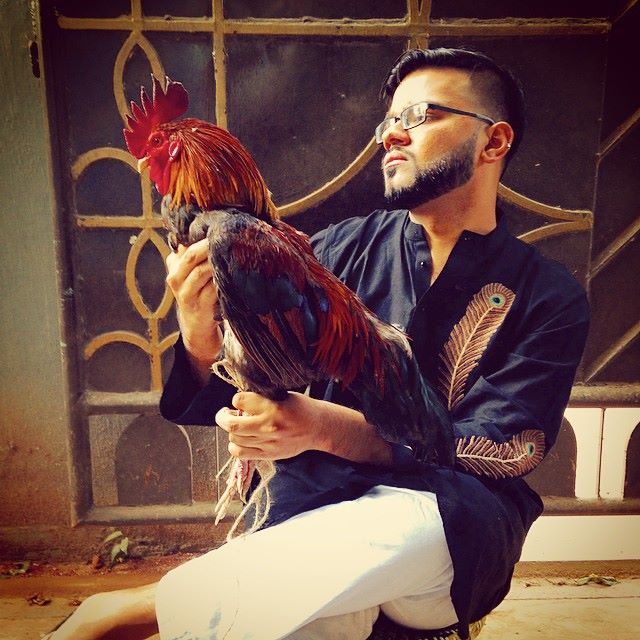
Sephardic Cuisine: Passover on the Bosporus
The story of how a South-Asian American Muslim foodie, a Jewish Latino Literature professor, and an Irish-Catholic physicist, amongst several other hyphenated attendees, gathered for Passover Seder may seem farfetched at first thought. But then again, we’re talking about Byzantium… I mean, Constantinop – ermm, Istanbul! In the king of all crossroads cities, at the terminus of the Silk Road itself- where seekers and nomads were already roaming rife for millennia, it’s not too hard to imagine such a gathering. Many came searching for trade, some came for refuge, while a few others still come to the city for things all-too ethereal for words. At times, they came together – the silk merchant with the pilgrim, the janissary with refugees – partaking in each other’s journeys to the city. I was no different.
A memorable meal in Turkey often involves at least one of its many kebaps and eggplant dishes. Think: Adana kebap with a side of imam bayildi. Finishing it off with a tooth-aching dessert made of boiled chicken breast (you read that correctly) may make the meal altogether unforgettable. However, after spending over three months in the country, my most vivid culinary memories were simply of several pieces of unleavened bread and nine drops of wine. Kosher, of course.
This was a cultural-culinary experience shared with a dear friend in Istanbul. Nancy, who took me to the Passover Seder potluck, had a birthdate several decades prior to mine. But Nancy and I could spend hours together (and needless to say, there were many days worth of these hours), walking through the meandering alleys of the city, talking about its sights and sounds, and more often than not, of its many smells and tastes. Introduced to each other by a mutual friend due to, as she called it, “a mutual food geekery”, ours was a friendship forged by many other “mutuals” – a love for seeing the world, learning languages, and of course, cooking and eating.
 Otherwise a professor of Spanish language and Latino and Latin American literature and culture at Smith College, it turned out Nancy came to Istanbul to live out every nomadic foodie’s dream. A desire to find out what was cooking in the kitchen of bygone ancestors seems to afflict us travelers more so than others, perhaps an unknown genetic coupling that equally tingles our tongues as much as our toes. Nancy wasn’t spared this affliction when she received a Fulbright Fellowship to do research in Istanbul for a semester. Her thesis? “What is the difference between Sephardic Jewish and Turkish cuisines?”
Otherwise a professor of Spanish language and Latino and Latin American literature and culture at Smith College, it turned out Nancy came to Istanbul to live out every nomadic foodie’s dream. A desire to find out what was cooking in the kitchen of bygone ancestors seems to afflict us travelers more so than others, perhaps an unknown genetic coupling that equally tingles our tongues as much as our toes. Nancy wasn’t spared this affliction when she received a Fulbright Fellowship to do research in Istanbul for a semester. Her thesis? “What is the difference between Sephardic Jewish and Turkish cuisines?”
And thus began our weekly outings, to random bazars and restaurants, eating and – ah-hem, researching – our way through the city.
The true depth of her research, however, did not become apparent to me until the passing away of her mother while Nancy was still doing her research in Istanbul. Only in our subsequent conversations did I fully grasp what her research entailed. The fellowship was not a means of just fulfilling her academic and intellectual curiosities – it was also a way for her to dig into her roots. Nancy’s was an identity of both flesh and spirit that traversed many seas: Red, Mediterranean, Caribbean, Aegean, and a few more spanning in between. The research was equally about documenting the history of a people expelled, dispersed, and absorbed along those shores. However, at the core of it, it was homage to her matrilineal identity. Although raised with a secular upbringing, her Sephardic Jewish identity remained persistently intact through the generations. As a child, she didn’t know she was eating Turkish or Greek dishes for dinner; for her, it was simply Sephardic food. Likewise, the language she heard her mother speak to abuela was just as “Jewish” as it was Spanish, with minor twists heard here and there.
But Ladino, the variant of Spanish spoken by Sephardic Jews, including Nancy’s mother and grandmother, was more than that. The language preserved within it a whole faith and many fallen empires; histories and stories of people uprooted and resettled time and time again. Who knows how many generations of maternal memories were passed down through this amalgamation of Castilian consonants and Hebrew gutturals? How many words remained intact in the multiple layers of its making, swerving back and forth from Judea, then Alhambra, Ottoman, and beyond.
However, what five centuries of distance from Sepharad (Hebrew for Spain, hence Sephardic) could not do was undone within only a generation. In a world fomenting with nationalist fervor, minority languages and identities stood little chance. While Ataturk was Turkifying Istanbul, Nancy’s mother faced the staunch assimilative policies of the United States. It was a time when students were beaten for speaking their mother languages, Ladino included. Yet, certain spaces remained safe havens for these languages, and more often than not, it was in a grandmother’s kitchen. Nancy’s grandmother refused assimilation, only spoke broken English, never abandoning the Ladino she used with her children and raising them in a largely Spanish-speaking neighborhoods, first in Harlem, then the Bronx. Perhaps it was the comfort of hearing familiar words, but family was never absorbed into the largely Ashkenazi Jewish population of the city, even when Nancy’s mother married her Ashkenazi father.
It comes as no surprise that Nancy chose to become a professor of Spanish. During her years in Spain for her studies, I’m sure a part of her sought the roots of her Ladino linguistic background. But those Sunday lunches cooked by her grandmother; those Turkish and Balkan dishes she grew up eating? Where did those come from? To answer that, Nancy took herself to Istanbul. Though hers is an ongoing research project – as any culinary project should be – there are some interesting points to be made. The Sephardic cuisine, like the Ladino language, was layered with the history of its multiple homes. Judea gave it Kashrut, Moorish Iberia gave it the ingredients, and the Ottoman Aegean gave it the final touches to create such dishes as bourekitas and rulikos de berendjena.
 It has been a long two years since our food-frolicking in that city, and yet, I really can’t pinpoint why that Seder, with its dry matzo and impromptu maror – supplemented with a very spicy chickpea dish from my own kitchen – remains such a poignant memory of my stay in Istanbul. Maybe it had something to do with the mishmash of a caravanserai that sat together around the table. Ashkenazim with Sephardic, Mizrahi with a Muslim, physicist, philosopher, we were a group of people – spiritual or non-, seekers or long settled – who had traversed the seas for that Passover dinner.
It has been a long two years since our food-frolicking in that city, and yet, I really can’t pinpoint why that Seder, with its dry matzo and impromptu maror – supplemented with a very spicy chickpea dish from my own kitchen – remains such a poignant memory of my stay in Istanbul. Maybe it had something to do with the mishmash of a caravanserai that sat together around the table. Ashkenazim with Sephardic, Mizrahi with a Muslim, physicist, philosopher, we were a group of people – spiritual or non-, seekers or long settled – who had traversed the seas for that Passover dinner.
Follow Nancy’s Culinary Adventures:
https://www.instagram.com/5handsinturkey/
http://sophia.smith.edu/blog/fivehands/
About the Author
Abdul-Kadar (AK) Rahim is a marketer and product developer with a healthy obsession with all-things culinary. He is part of NooshTube’s creative team, collaborating on content and marketing. Though brought up on the East Coast, he has a tendency to roam around the world, collecting stories and recipes along the way.

